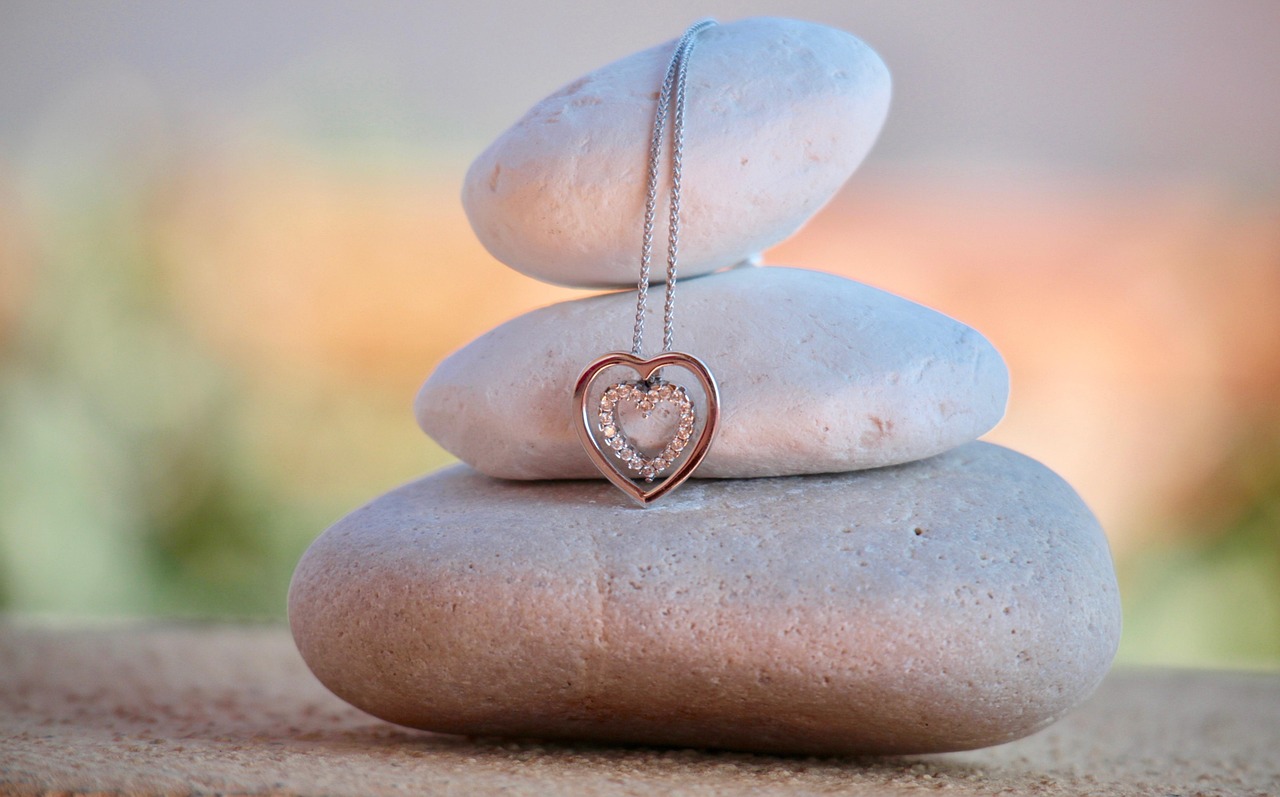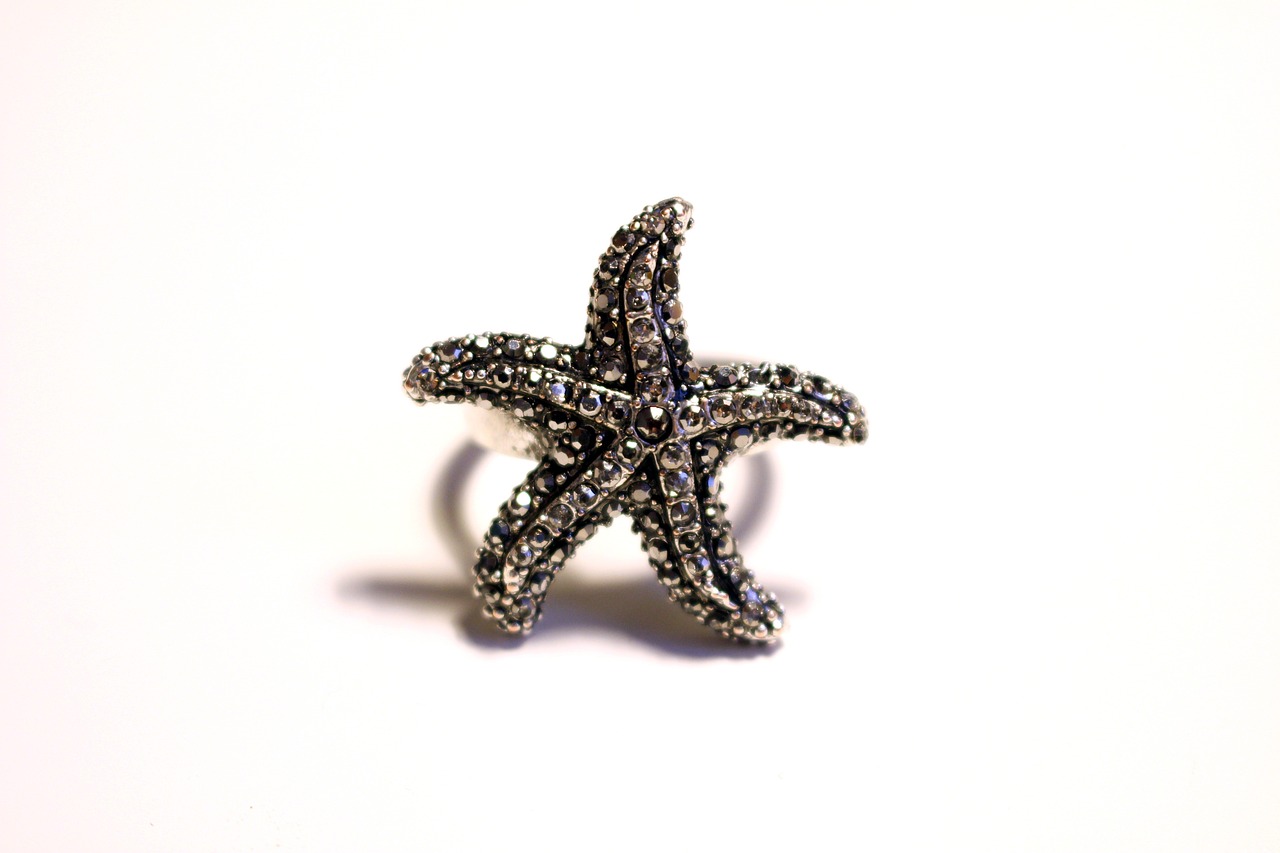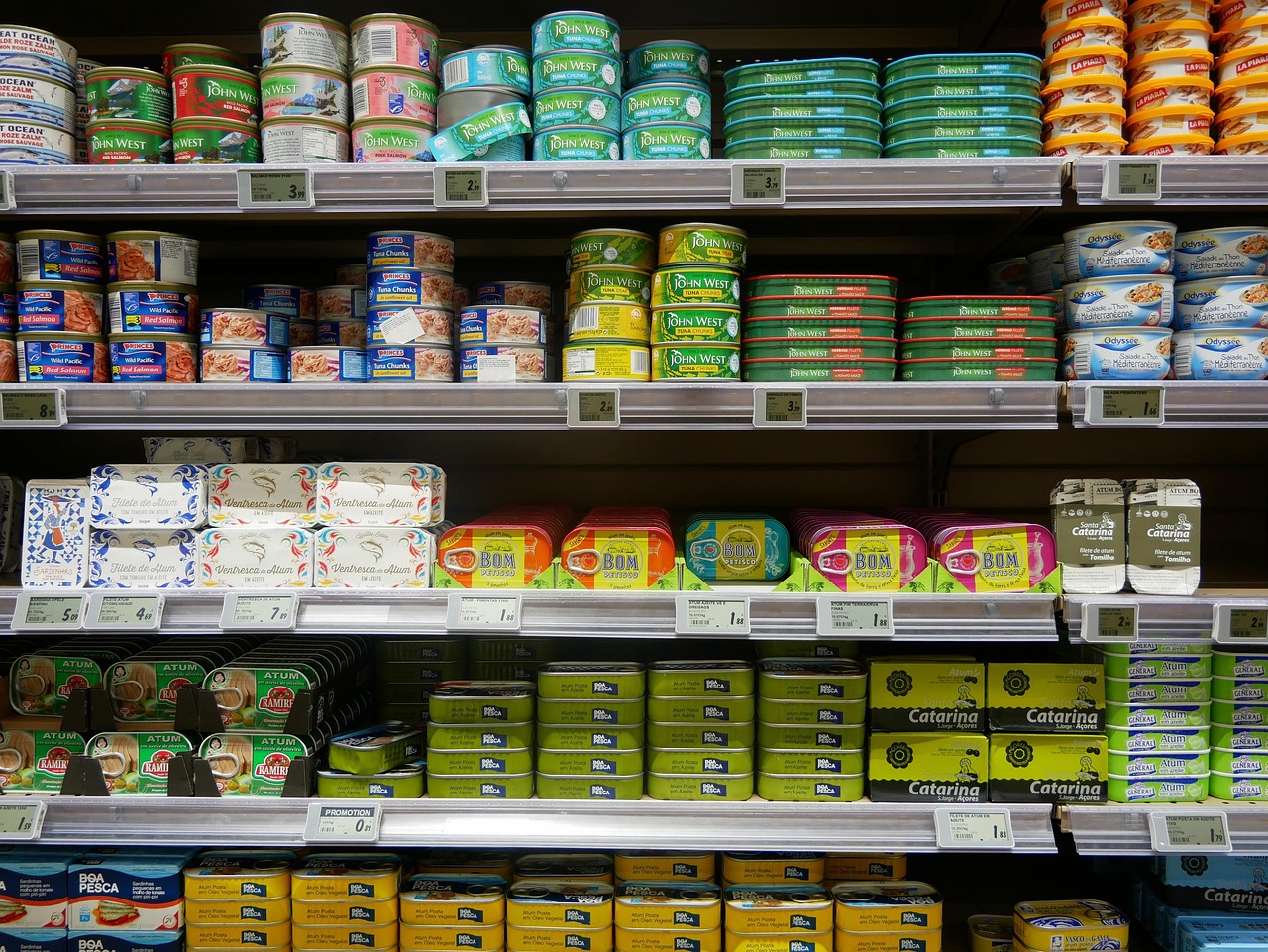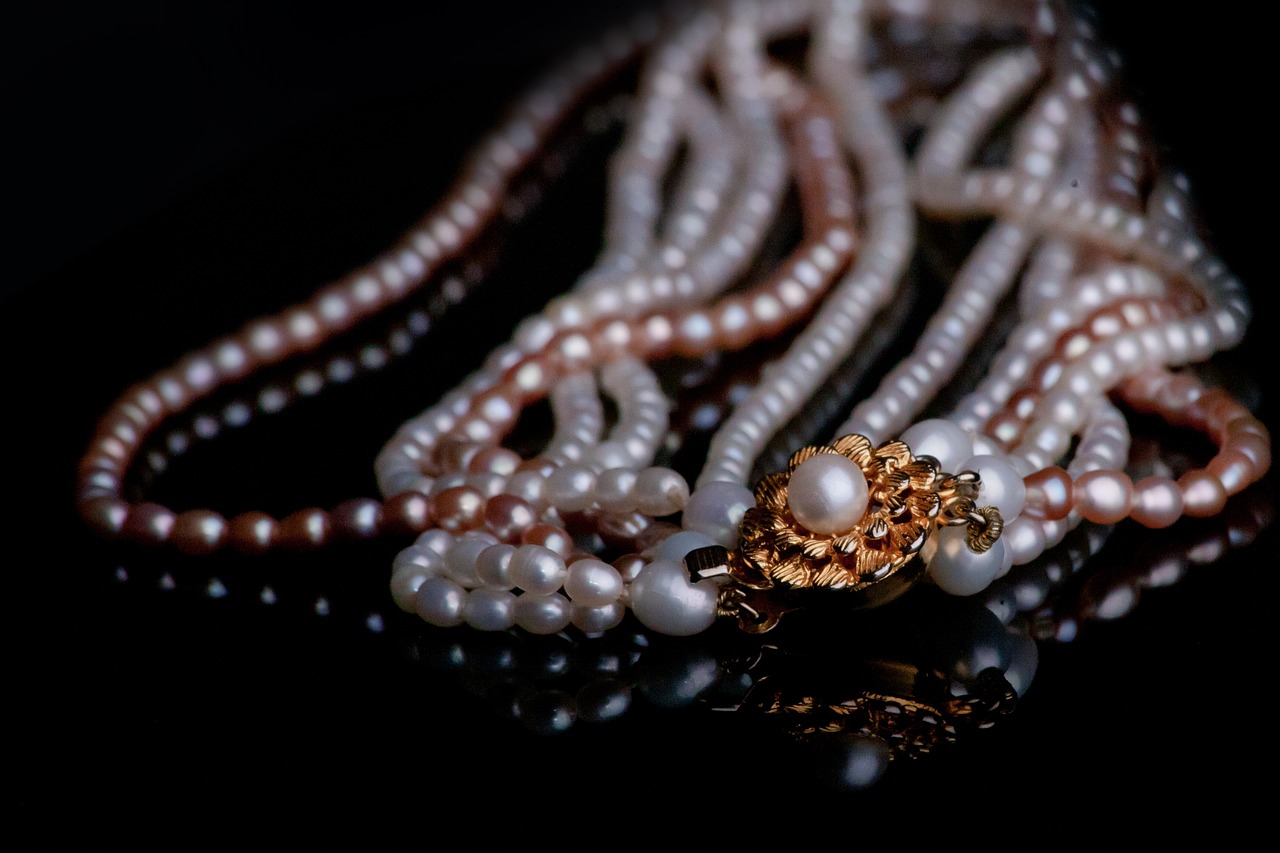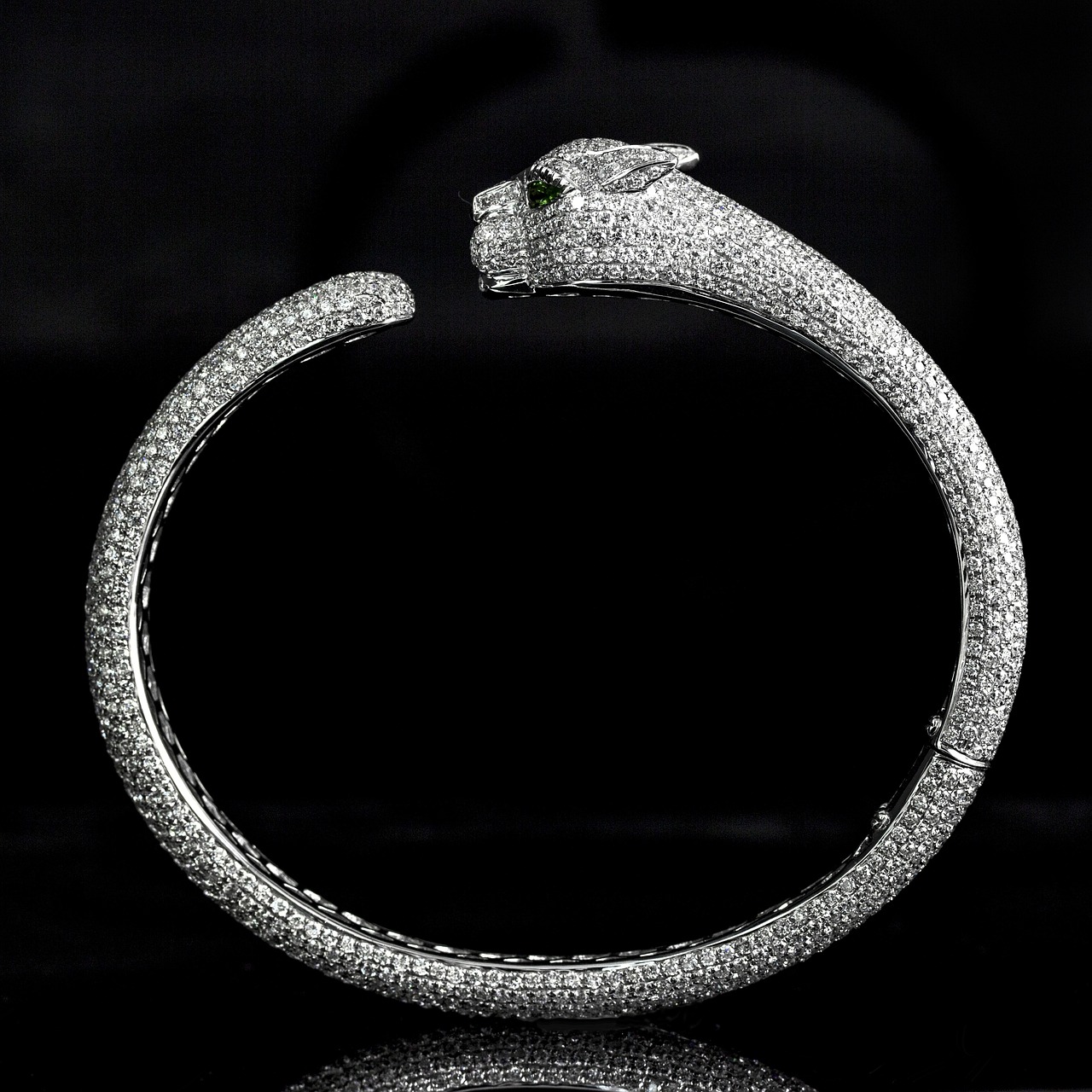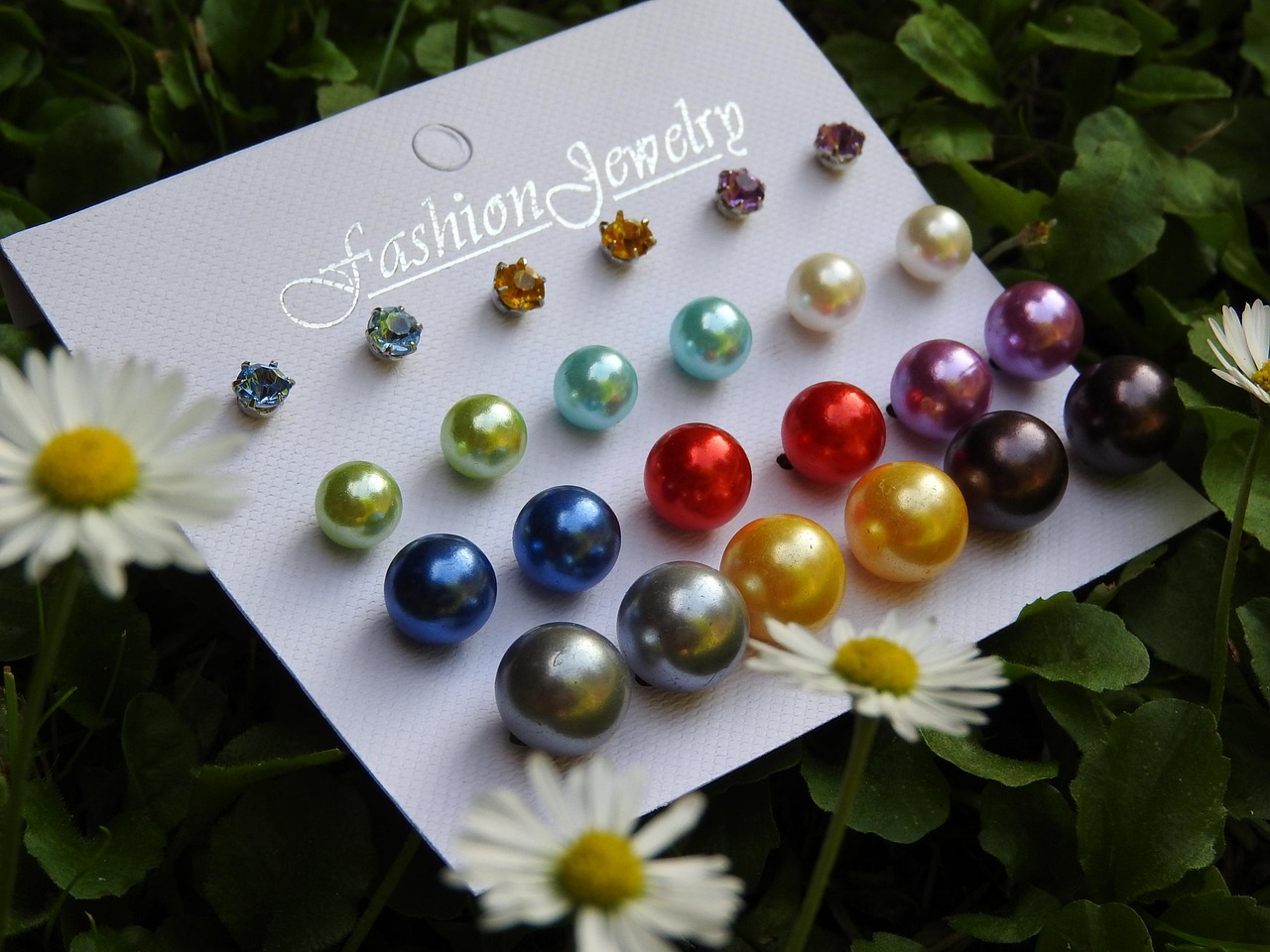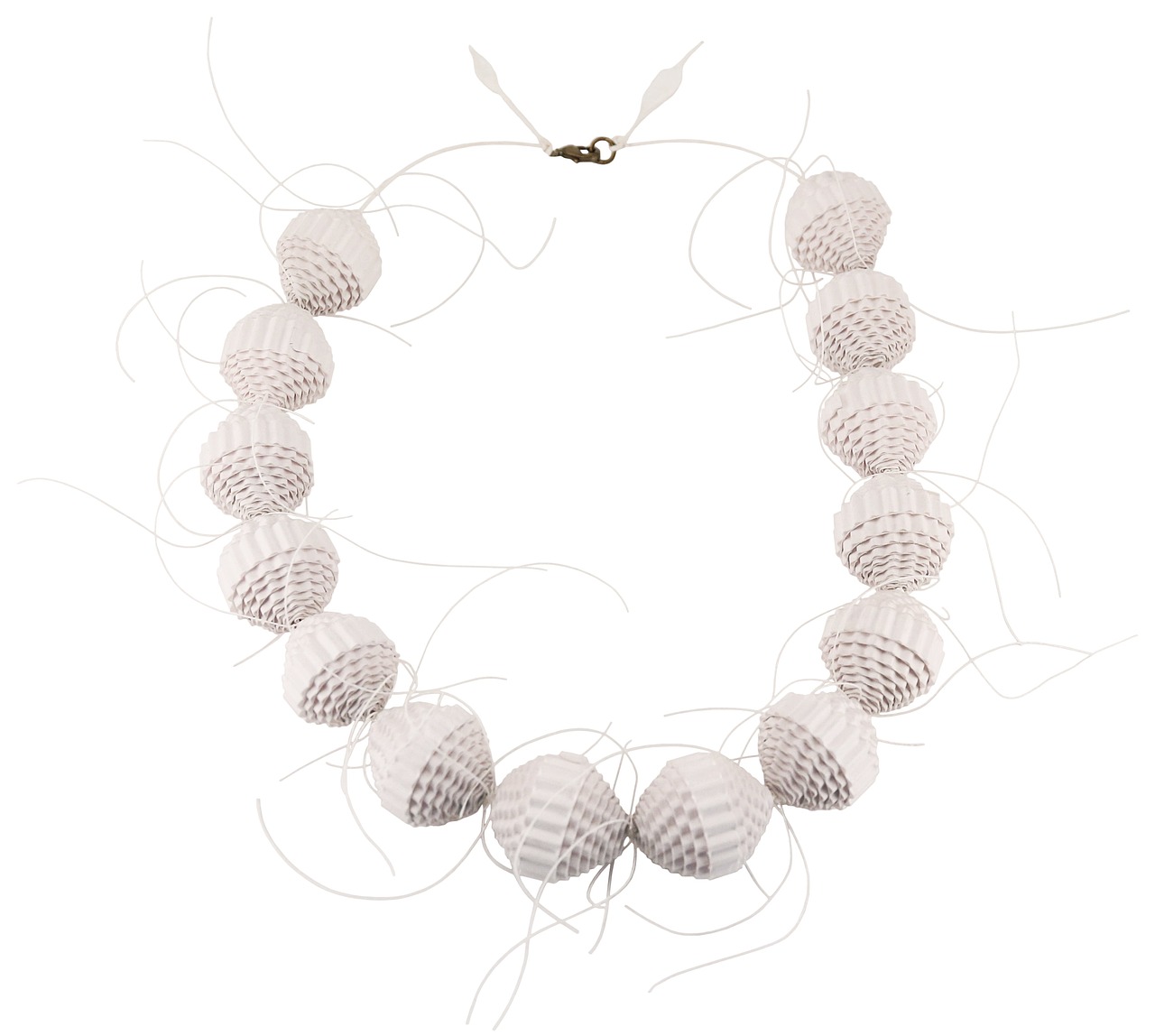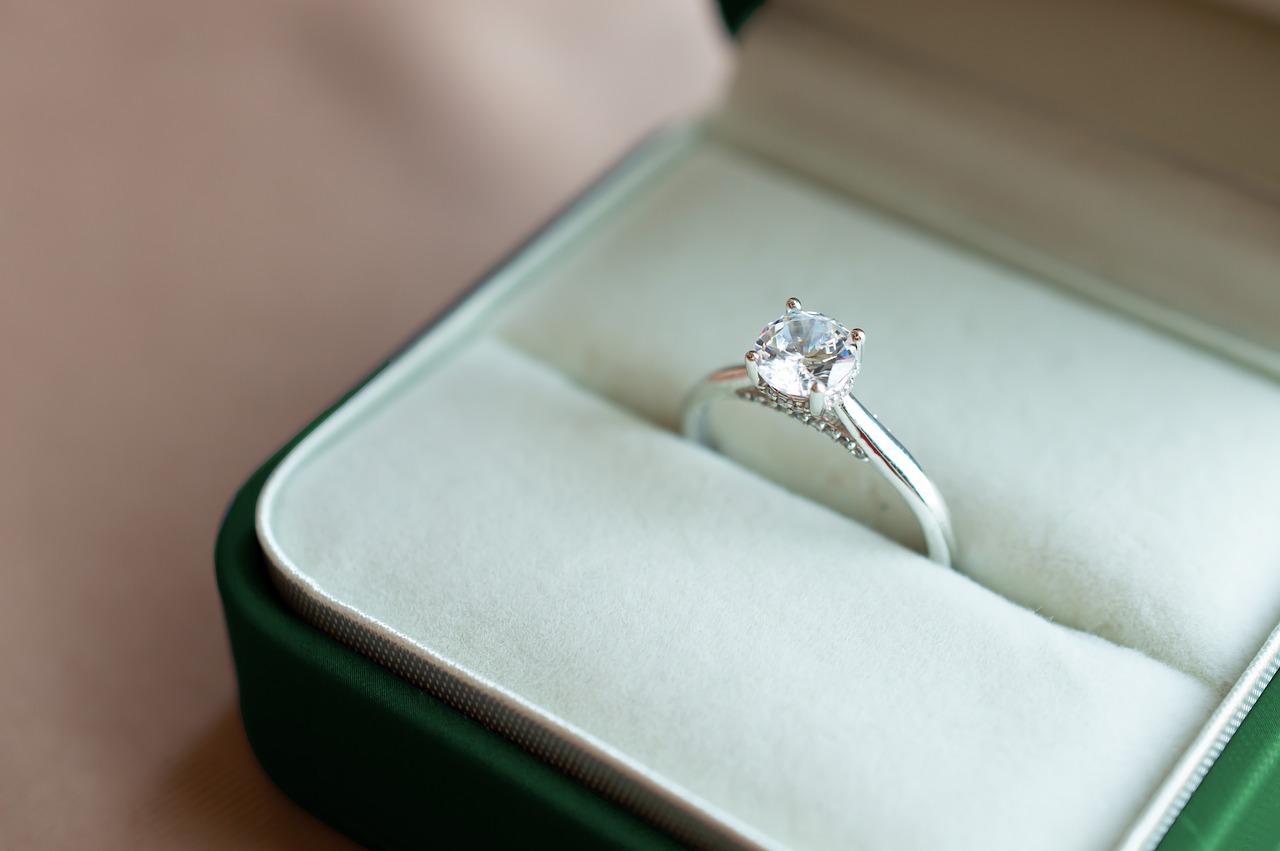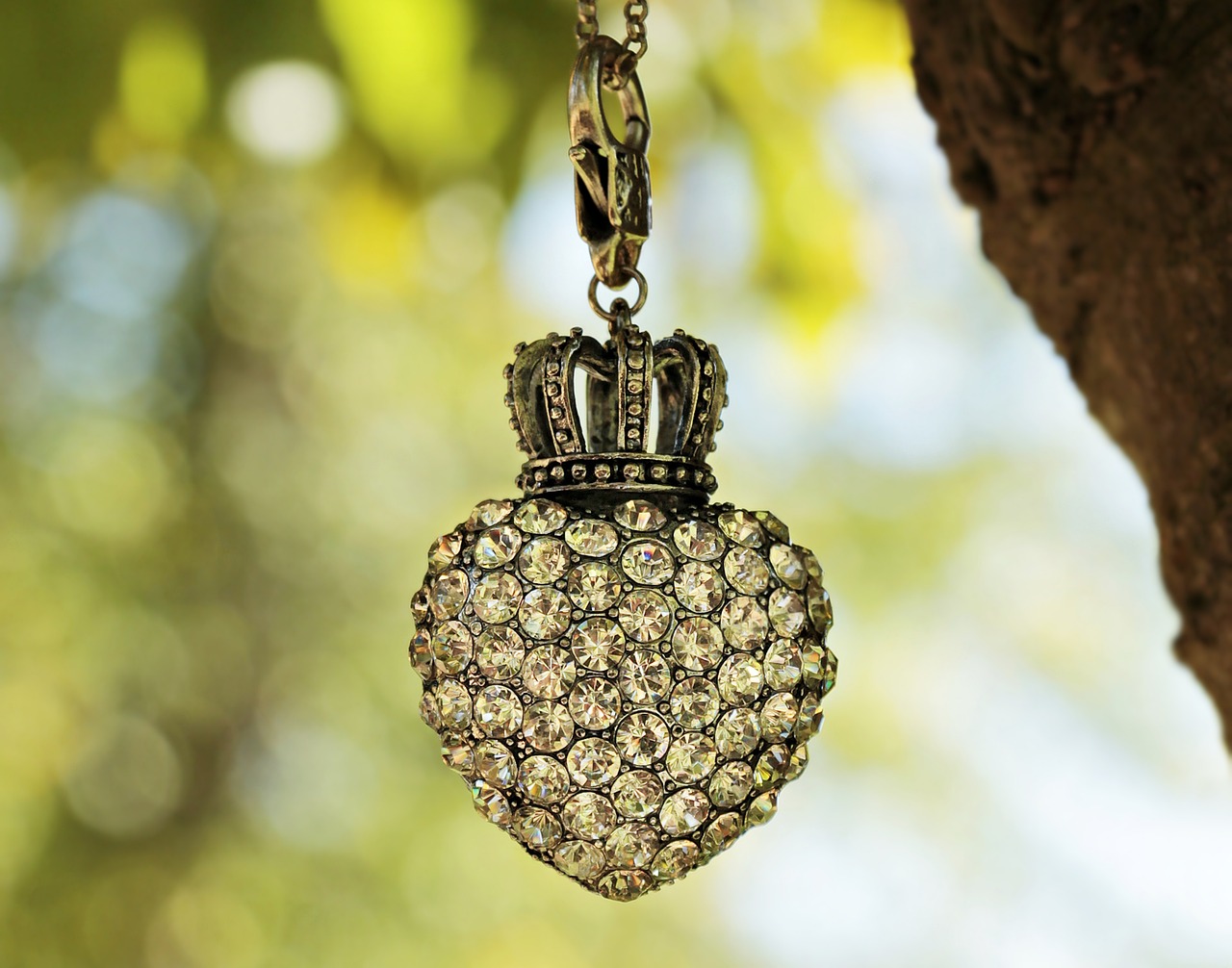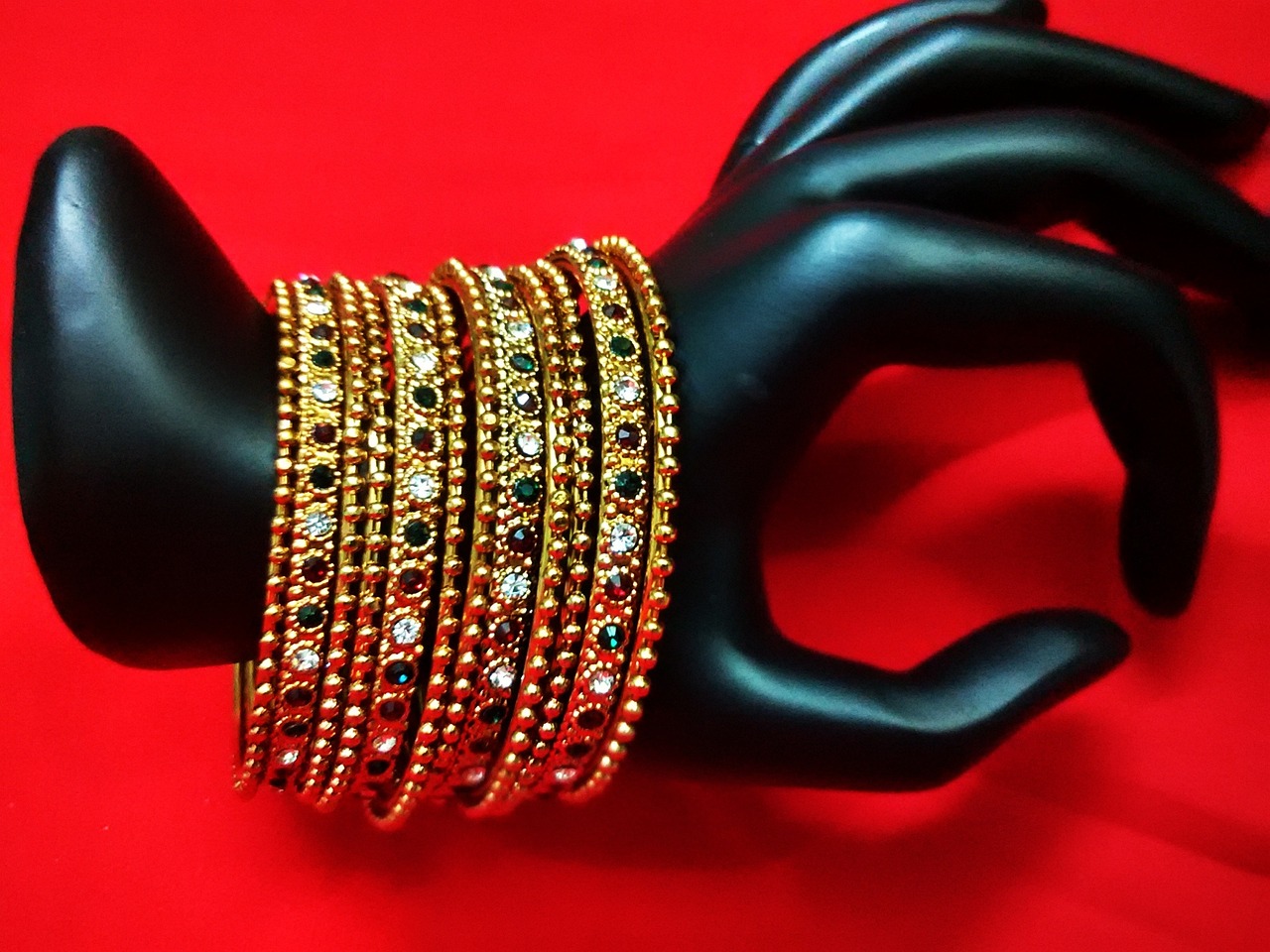This article delves into effective methods for storing necklaces to prevent tangling, ensuring your jewelry remains organized and accessible while maintaining its beauty and integrity over time.
Why Do Necklaces Get Tangled?
Understanding the reasons behind tangled necklaces can help you choose the best storage solutions. Factors such as chain length, material, and storage conditions all play a significant role. Long chains are particularly prone to tangling, especially if they are made from materials that easily knot or twist.
What Are the Best Storage Options for Necklaces?
There are various storage solutions available, from jewelry boxes to hanging organizers. Selecting the right option depends on your collection size and personal preferences. Below are some popular choices:
- Jewelry Boxes: Offer compartments to keep necklaces separated.
- Hanging Organizers: Save space and keep necklaces visible.
- Wall-Mounted Hooks: Provide a stylish display while saving space.
Jewelry Boxes: Pros and Cons
Jewelry boxes offer a classic storage solution with compartments to keep necklaces separated. However, they can take up space and may not prevent tangling entirely. When selecting a jewelry box, consider materials, size, and compartmentalization to ensure it meets your storage needs without compromising accessibility.
DIY Jewelry Box Ideas
Creating a DIY jewelry box can be a fun project. Use materials like wood, fabric, or even repurposed containers to craft a personalized storage solution that suits your style.
Hanging Organizers: A Space-Saving Solution
Hanging organizers can save space and keep necklaces visible. These solutions often feature hooks or clear pockets for easy access and organization, making them ideal for those with larger collections.
How to Use Hooks for Necklace Storage?
Hooks are a practical way to store necklaces, allowing them to hang freely and reducing the risk of tangling. Consider both wall-mounted and freestanding options for versatile storage.
Wall-Mounted Hooks: A Stylish Display
Wall-mounted hooks not only save space but also serve as decorative elements. Choose designs that complement your decor while providing functionality.
Freestanding Jewelry Trees
Jewelry trees are versatile and can hold multiple necklaces without tangling. They come in various styles and materials, making them a popular choice for many.
What Materials Are Best for Preventing Tangling?
The material of your necklaces can influence how easily they tangle. Understanding these materials can help you choose the best storage method for your collection. For instance, certain chain types, like snake chains or box chains, are less likely to tangle compared to others.
Using Anti-Tarnish Pouches
Anti-tarnish pouches not only protect your jewelry from tarnishing but can also help reduce tangling by keeping pieces separated and contained.
How to Organize Necklaces by Length or Style?
Organizing necklaces by length or style can simplify access and reduce tangling. Implementing a systematic approach can make your collection more manageable.
- Length-Based Organization: Grouping necklaces by length can help you find the right piece quickly.
- Style-Based Organization: Organizing by style allows for easy selection based on outfit choices.
What Are Some Tips for Traveling with Necklaces?
Traveling with necklaces requires careful planning to prevent tangling. Implement specific strategies to keep your jewelry safe and organized while on the go.
- Travel Jewelry Cases: Investing in a travel jewelry case can provide dedicated compartments for necklaces.
- Using Straws for Chains: A simple hack involves threading chains through straws to prevent tangling.
How to Maintain Your Necklace Collection?
Regular maintenance is essential for keeping necklaces in good condition. Cleaning and proper storage can prolong their lifespan and prevent damage. Different materials require specific cleaning methods, so understanding how to care for each type can help maintain their appearance.
Regularly inspecting your necklaces for signs of wear can prevent future tangling and damage. Catching issues early allows for timely repairs and maintenance.

Why Do Necklaces Get Tangled?
Necklaces are a beautiful accessory that can elevate any outfit, but they often become a tangled mess when stored improperly. Understanding why necklaces get tangled is crucial for choosing the best storage solutions and maintaining the integrity of your jewelry. Several factors contribute to this common issue, including chain length, material, and the conditions in which they are stored.
Several elements can lead to the tangling of necklaces:
- Chain Length: Longer chains are more prone to tangling than shorter ones. The extra length allows for more movement, increasing the chances of knots forming.
- Material: Different materials behave differently. For instance, delicate chains made of fine metal can easily intertwine, while sturdier materials may resist tangling.
- Storage Conditions: The way necklaces are stored plays a significant role. Storing them in a crowded space or without proper separation can lead to tangling.
The design of the chain itself can significantly influence its tendency to tangle. For example:
- Snake Chains: These chains have smooth, interlocking segments that help prevent knots.
- Box Chains: The square links of box chains also minimize tangling compared to more flexible designs.
- Rope Chains: Although visually appealing, their twisted design can lead to more tangling.
The environment in which necklaces are stored can exacerbate tangling issues. Consider the following:
- Humidity: High humidity levels can cause chains to stick together, making them more likely to tangle.
- Temperature: Extreme temperature fluctuations can affect the flexibility of certain materials, leading to knots.
- Storage Space: A cluttered jewelry box or drawer can cause necklaces to rub against each other, increasing the risk of tangling.
To avoid the frustration of tangled necklaces, consider implementing these effective storage solutions:
- Use Individual Compartments: Store each necklace in a separate compartment to prevent them from intertwining.
- Invest in Hanging Organizers: These allow necklaces to hang freely, reducing the risk of tangling.
- Utilize Anti-Tarnish Pouches: Not only do these protect against tarnishing, but they also keep necklaces separated.
By understanding the underlying reasons for tangled necklaces, you can make informed decisions about storage solutions that will keep your jewelry organized and tangle-free. Whether you opt for a jewelry box, hanging organizer, or DIY solutions, the key is to consider factors such as chain length, material, and storage conditions. With the right approach, you can ensure that your necklaces remain beautiful and accessible for years to come.
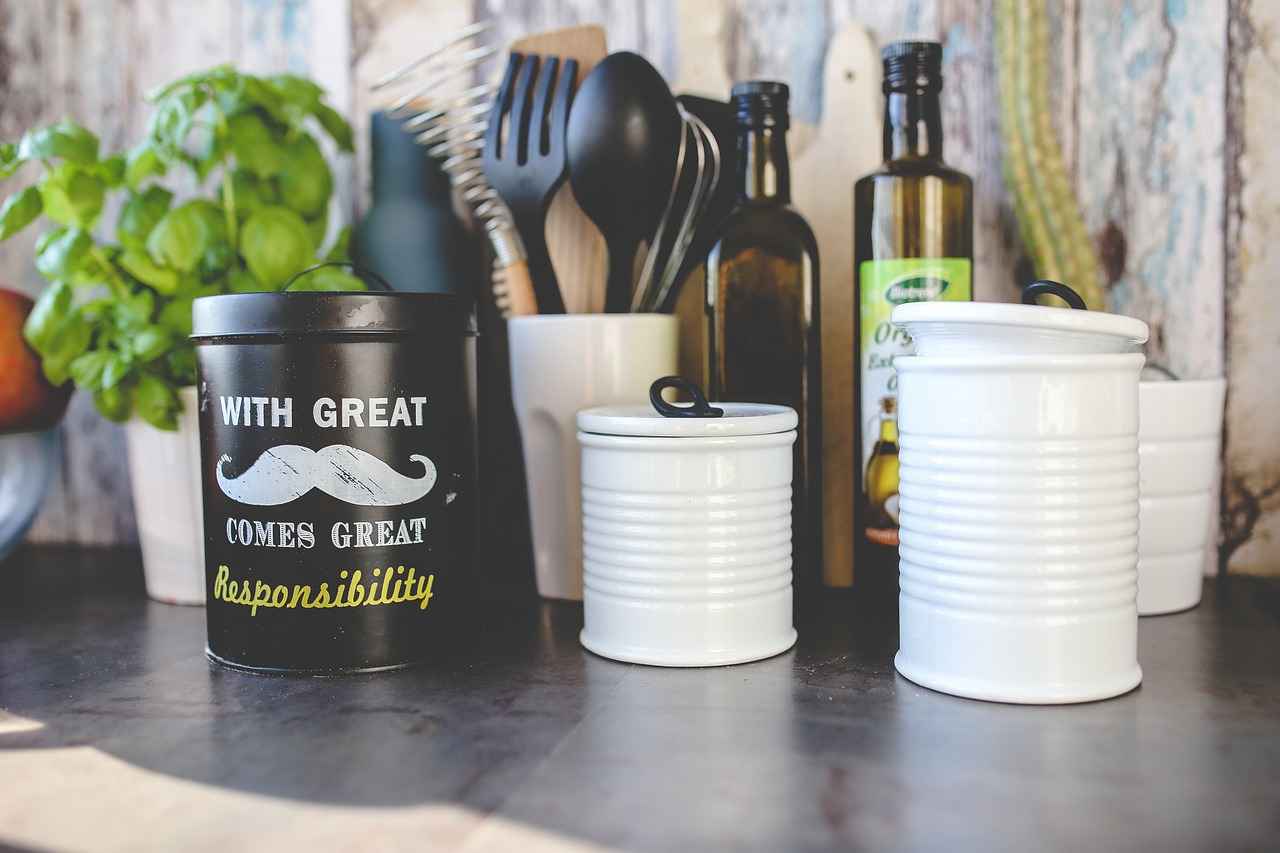
What Are the Best Storage Options for Necklaces?
When it comes to storing your necklaces, choosing the right solution is crucial to prevent tangling and damage. With a variety of options available, understanding their advantages and disadvantages can help you make an informed decision that suits your personal style and collection size.
There are numerous storage solutions available, ranging from traditional jewelry boxes to innovative hanging organizers. The best choice depends on factors such as the size of your collection, available space, and your personal preferences.
- Jewelry Boxes: These are a classic choice for many jewelry enthusiasts. Jewelry boxes typically come with various compartments designed to keep necklaces separated. However, they can take up considerable space and may not completely prevent tangling if not organized properly.
- Hanging Organizers: These are ideal for maximizing space and keeping necklaces visible. They often feature hooks or clear pockets, allowing for easy access and organization. This type of storage is particularly effective for those with a larger collection.
- Wall-Mounted Hooks: Not only do they save space, but they also serve as a decorative display. By choosing stylish hooks that complement your decor, you can turn your jewelry into a part of your home’s aesthetic while keeping it organized.
- Freestanding Jewelry Trees: These versatile stands can hold multiple necklaces without tangling. Available in various designs, they allow for easy selection and display, making them a popular choice.
When selecting a storage option, consider how each method aligns with your lifestyle and organization preferences. For instance, if you frequently wear different necklaces, a hanging organizer or jewelry tree may be more suitable for quick access. Conversely, if you prefer a more traditional approach, a jewelry box can provide a secure and elegant solution.
Choosing the right storage solution involves evaluating several factors:
- Collection Size: Assess how many necklaces you own. A larger collection may require a more extensive setup, such as a combination of hanging organizers and jewelry boxes.
- Space Availability: Consider where you plan to store your necklaces. If space is limited, opt for wall-mounted solutions or compact jewelry boxes.
- Accessibility: Think about how often you wear your necklaces. Solutions that allow for easy access, like hanging organizers, might be more beneficial for daily wear.
- Style Preferences: Your storage solution should reflect your personal style. Whether you prefer a sleek modern look or a vintage aesthetic, there are options available to suit your taste.
Additionally, consider incorporating DIY solutions into your storage strategy. For example, you can create a customized jewelry box using repurposed materials or craft a hanging organizer with hooks and a wooden board. These personalized touches not only enhance functionality but also add a unique flair to your jewelry storage.
The material of your storage solution can significantly impact its effectiveness. For instance, soft fabrics can help prevent scratches, while anti-tarnish pouches can protect your necklaces from tarnishing and tangling. Choosing the right materials can enhance the longevity of your jewelry and keep it looking its best.
In conclusion, selecting the best storage option for your necklaces is essential for maintaining their beauty and preventing tangles. By considering your collection size, available space, and personal style, you can create an organized and aesthetically pleasing jewelry storage solution that meets your needs.
Jewelry Boxes: Pros and Cons
When it comes to storing your precious necklaces, jewelry boxes have long been considered a classic choice. They offer a sense of elegance and can be a beautiful addition to your dressing table. However, while they provide compartments to keep necklaces separated, there are both pros and cons to consider.
- Organization: Jewelry boxes typically come with various compartments, making it easier to categorize and organize your necklaces based on length, style, or material.
- Protection: These boxes shield your jewelry from dust, moisture, and potential damage, preserving their shine and integrity over time.
- Aesthetics: A well-designed jewelry box can enhance the decor of your room, adding a touch of elegance and sophistication.
- Portability: Jewelry boxes are often compact and easy to transport, making them a great option for travel or when you need to store your jewelry away.
- Space Consumption: Depending on the size of your collection, jewelry boxes can take up considerable space, especially if you have a large number of necklaces.
- Tangling Issues: While compartments are designed to keep necklaces separated, they may not completely prevent tangling, particularly for longer or more delicate chains.
- Limited Visibility: Jewelry boxes often obscure the contents, making it difficult to see all your options at a glance, which can lead to frustration when you’re in a hurry.
- Cost: High-quality jewelry boxes can be expensive, and while cheaper options exist, they may not offer the same level of protection or aesthetic appeal.
When selecting a jewelry box, consider factors such as material, size, and compartmentalization. A box made from quality materials, such as wood or velvet, can provide better protection against scratches and tarnishing. Additionally, look for a size that fits your collection without overwhelming your space. The compartment layout should suit your needs—some may prefer a box with numerous small compartments, while others might need larger sections for statement pieces.
If you’re feeling creative, consider making your own jewelry box. You can repurpose materials like old wooden crates, fabric, or even cardboard to create a unique and personalized storage solution. This not only gives you a functional piece but also adds a personal touch to your decor.
In summary, while jewelry boxes can be a beautiful and organized way to store your necklaces, it’s essential to weigh their advantages against their drawbacks. By understanding the pros and cons, you can make an informed decision that best suits your jewelry collection and personal style.
Choosing the Right Jewelry Box
When it comes to organizing your jewelry collection, is crucial. This selection process can significantly impact the longevity and accessibility of your treasured pieces. A well-chosen jewelry box not only protects your items but also enhances your experience when selecting accessories for any occasion.
Several factors influence your decision, including:
- Materials: The material of the jewelry box can affect its durability and aesthetic appeal. Common materials include wood, metal, and fabric. Each has its own benefits and drawbacks.
- Size: Consider the size of your jewelry collection. A larger box may be necessary for extensive collections, while a compact box may suffice for minimalists.
- Compartmentalization: Look for boxes with multiple compartments to keep different types of jewelry organized and prevent tangling.
The material of your jewelry box plays a significant role in protecting your jewelry. For example:
- Wood: Offers a classic look and durability, but may require a protective lining to prevent scratches.
- Metal: Provides a modern aesthetic and is typically more durable, but can be prone to scratching and tarnishing.
- Fabric: Soft and often more lightweight, fabric boxes can be portable but may not offer the same level of protection as harder materials.
The size of your jewelry box should reflect the size of your collection. A box that is too small can lead to overcrowding, increasing the chances of tangling and damage. Conversely, a box that is too large may waste space and make it difficult to find specific pieces. Consider your collection’s growth potential when selecting a size.
Compartmentalization is essential for keeping your jewelry organized. A well-designed box will have:
- Separate sections: For necklaces, bracelets, earrings, and rings, minimizing the risk of tangling.
- Removable trays: Allow for flexibility in organizing and accessing your jewelry.
- Soft linings: To protect delicate pieces from scratches and damage.
Many jewelry boxes come with the option for personalization, allowing you to add a unique touch. This can include:
- Monograms: Adding your initials for a personal flair.
- Custom colors: Selecting a color that matches your decor or personal style.
- Unique designs: Choosing a box with a design that reflects your personality.
Jewelry boxes can be found in various places, including:
- Online retailers: Websites often have a wider selection and competitive prices.
- Local jewelry stores: Provide the opportunity to see and feel the box before purchasing.
- Craft fairs and artisan markets: Offer unique, handcrafted options that can be one-of-a-kind.
Ultimately, choosing the right jewelry box involves careful consideration of materials, size, and compartmentalization. By taking the time to evaluate these factors, you can ensure that your jewelry remains organized, accessible, and protected for years to come.
DIY Jewelry Box Ideas
Creating your own jewelry box is not just a practical solution for storing your precious pieces; it can also be a creative outlet that reflects your personal style. Whether you are an experienced crafter or a beginner, this DIY project can be both enjoyable and rewarding. In this article, we will explore various that utilize materials such as wood, fabric, and even repurposed containers, allowing you to craft a personalized storage solution.
Opting for a DIY jewelry box allows for customization that store-bought options often lack. You can choose the size, shape, and design that best fits your needs and aesthetic. Additionally, creating a jewelry box can be a cost-effective way to organize your collection while also being an environmentally friendly choice by using materials you already have.
- Wood: A classic choice for durability and elegance. You can use reclaimed wood for a rustic feel or craft a sleek modern design.
- Fabric: Soft and versatile, fabric can be used to cover boxes or create pouches within a wooden frame.
- Repurposed Containers: Old tin boxes, shoeboxes, or even small drawers can be transformed into unique jewelry storage.
Follow these simple steps to create your own jewelry box:
- Gather Your Materials: Collect the items you will need, including the main container, decorative elements, and any tools required for assembly.
- Design Your Box: Sketch a design that includes compartments for different types of jewelry, such as rings, necklaces, and earrings.
- Assemble the Base: If using wood, cut the pieces to size and assemble them using wood glue or screws. For fabric, sew or glue the fabric to the base container.
- Add Compartments: Use dividers made from cardboard or wood to create sections within the box.
- Decorate: Personalize your creation with paint, fabric, or embellishments like beads or stickers.
Once your box is assembled, consider these creative decoration ideas:
- Paint: Use non-toxic acrylic paint to give your box a fresh look.
- Decoupage: Apply decorative paper or fabric using decoupage medium for a unique finish.
- Embellishments: Add knobs or handles, decorative paper, or even small mirrors to enhance the design.
To maximize the functionality of your DIY jewelry box, consider these organizational tips:
- Sort by Type: Group similar items together, such as earrings with earrings and necklaces with necklaces.
- Use Anti-Tarnish Materials: Line your compartments with anti-tarnish fabric to keep your jewelry looking new.
- Label Compartments: Use small labels to easily identify where each type of jewelry is stored.
Creating a DIY jewelry box is an excellent way to express your creativity while providing a functional solution for your jewelry storage needs. With a little time and effort, you can craft a beautiful and personalized box that not only organizes your jewelry but also serves as a decorative piece in your home. So gather your materials, unleash your creativity, and start crafting!
Hanging Organizers: A Space-Saving Solution
When it comes to organizing jewelry, especially necklaces, hanging organizers present a highly efficient solution. These innovative storage options not only save precious space but also keep your necklaces visible and accessible. Their design typically includes hooks or clear pockets, allowing for easy access and superb organization.
Hanging organizers are ideal for various reasons. First and foremost, they prevent tangling, which is a common issue with traditional storage methods. By allowing necklaces to hang freely, these organizers minimize friction and movement that can lead to knots. Additionally, their visibility encourages you to wear your jewelry more often, as you can see all your options at a glance.
- Wall-Mounted Organizers: These organizers can be attached directly to your wall, saving counter space while providing a decorative touch. They often feature multiple hooks or bars to accommodate various necklace lengths.
- Over-the-Door Organizers: Perfect for small spaces, these organizers utilize the back of doors for hanging necklaces. They usually come with pockets or hooks, making them versatile and easy to use.
- Freestanding Hanging Racks: These are portable and can be placed anywhere in your home. They often resemble jewelry trees and can hold multiple necklaces without tangling.
One of the standout features of many hanging organizers is the use of clear pockets. These pockets allow you to see your necklaces without having to take them out. This visibility not only saves time but also helps prevent accidental tangling as you rummage through your collection. Furthermore, clear pockets protect your jewelry from dust and damage, ensuring that your pieces remain in pristine condition.
When using hanging organizers, consider grouping necklaces by length or style. This systematic approach can simplify access and enhance your overall organization. For instance, you might hang shorter necklaces on one side and longer ones on the other, making it easier to find the right piece for any outfit.
- Use Vertical Space: Make the most of your wall space by installing multiple rows of hooks or shelves.
- Mix and Match: Combine different types of organizers, like hooks for necklaces and boxes for earrings, to create a comprehensive jewelry station.
- Regularly Rotate Your Collection: Keep your display fresh and engaging by periodically changing the arrangement of your necklaces.
To ensure your necklaces remain in excellent condition while stored in hanging organizers, regular maintenance is crucial. Periodically check for signs of wear or damage, and clean necklaces according to their specific materials. This practice not only prolongs the life of your jewelry but also keeps it looking its best.
In conclusion, hanging organizers are an excellent choice for anyone looking to keep their necklaces untangled and easily accessible. By investing in the right type of organizer and employing effective storage strategies, you can enjoy a beautifully organized jewelry collection that enhances your daily routine.
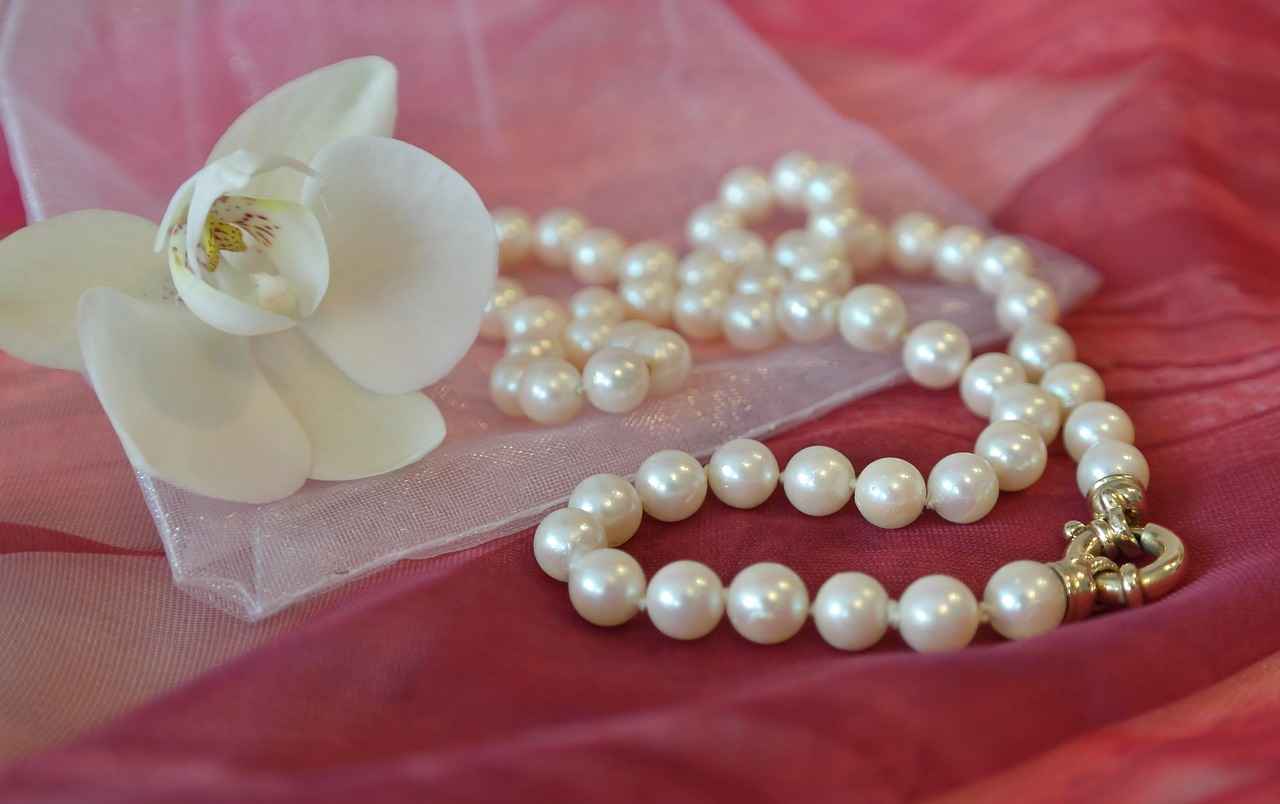
How to Use Hooks for Necklace Storage?
When it comes to organizing your jewelry, hooks serve as an effective and stylish solution for storing necklaces. They allow your necklaces to hang freely, which significantly reduces the risk of tangling. In this section, we will explore various options for using hooks, including wall-mounted and freestanding designs, to keep your necklaces beautifully displayed and easily accessible.
Using hooks for necklace storage is beneficial for several reasons:
- Prevention of Tangling: When necklaces hang freely, they are less likely to intertwine with one another.
- Visibility: Hooks allow you to see all your necklaces at a glance, making it easier to choose the perfect accessory for any outfit.
- Space Efficiency: Wall-mounted hooks can save valuable space on your dresser or vanity, while freestanding options can be placed anywhere.
Wall-mounted hooks are an excellent choice for those looking to combine functionality with aesthetics. These hooks can be installed in various locations, such as:
- Bedrooms: Install them near your dressing area for easy access.
- Bathrooms: Keep your favorite pieces close at hand while getting ready.
- Entryways: A great place to store necklaces you wear frequently as you head out the door.
When selecting wall-mounted hooks, consider designs that complement your home decor. Options range from minimalist metal hooks to decorative wooden racks, allowing you to express your personal style.
Freestanding jewelry trees offer a unique way to store necklaces without the need for wall space. These organizers typically feature branches on which you can hang multiple necklaces, preventing them from tangling. Here are some benefits of using a jewelry tree:
- Easy Access: With necklaces displayed prominently, you can quickly find your favorite pieces.
- Decorative Element: Jewelry trees can serve as decorative accents in your room.
- Portability: Freestanding options can be moved easily, allowing for flexible organization.
Choose a jewelry tree that suits your style and fits well with your existing decor. Materials can vary from metal to wood, and styles can range from elegant to quirky.
If you’re feeling creative, consider making your own necklace storage solution using hooks. Here are a few ideas:
- Repurposed Items: Use old picture frames or wooden boards as a base for your hooks. Simply attach hooks to the frame and hang it on the wall.
- Decorative Hooks: Choose decorative hooks that match your theme, such as vintage-style or modern designs.
- Painted Designs: Customize your hooks by painting them in colors that match your room’s decor.
Creating a DIY hook solution not only saves money but also allows for a personalized touch in your jewelry organization.
Once you have established your necklace storage using hooks, it’s essential to maintain the system for optimal results. Here are some tips:
- Regular Cleaning: Dust your hooks and necklaces regularly to keep them looking their best.
- Organize by Style or Color: Consider arranging your necklaces by style or color to make selection easier.
- Inspect for Damage: Regularly check your jewelry for signs of wear and tear to prevent tangling and damage.
By following these tips, you can ensure that your necklace storage remains efficient and visually appealing.
Wall-Mounted Hooks: A Stylish Display
When it comes to organizing your necklaces, wall-mounted hooks offer a unique blend of functionality and style. These hooks not only help save valuable floor space but also serve as decorative elements that can enhance the overall aesthetic of your home. By choosing designs that complement your existing decor, you can create an attractive display while ensuring your jewelry remains easily accessible.
Wall-mounted hooks are an excellent choice for necklace storage for several reasons:
- Space Efficiency: Utilizing vertical space allows for better organization in smaller living areas.
- Visibility: Keeping your necklaces on display makes it easier to select the perfect piece for any outfit.
- Customization: With a variety of designs and materials available, you can easily find hooks that match your personal style.
When selecting wall-mounted hooks, consider the following design options:
- Minimalist Hooks: Simple and sleek designs can blend seamlessly into modern decor.
- Vintage Styles: Ornate hooks can add a touch of elegance and charm to traditional interiors.
- Colorful Options: Brightly colored hooks can serve as a fun accent in a neutral space.
Proper installation is crucial for maximizing the functionality of your wall-mounted hooks:
1. Choose a location that is easily accessible.2. Use a level to ensure hooks are straight.3. Securely anchor hooks into wall studs for added stability.
To keep your necklaces tangle-free and organized, follow these practical tips:
- Group by Length: Arrange necklaces by length to make selection easier.
- Color Coordination: Organizing by color can create a visually appealing display.
- Style Variety: Mix different styles to showcase your unique collection.
To keep your necklace display looking its best, regular maintenance is essential:
- Dust Regularly: Prevent dust accumulation on both hooks and necklaces.
- Inspect for Damage: Regularly check for wear and tear to prevent future tangling.
- Reorganize as Needed: As your collection grows, be willing to adjust your organization strategy.
In conclusion, wall-mounted hooks are a stylish and practical solution for necklace storage. By selecting the right designs and implementing effective organization strategies, you can keep your jewelry tangle-free and beautifully displayed. This not only enhances the functionality of your space but also adds a personal touch to your home decor.
Freestanding Jewelry Trees
Freestanding jewelry trees are an innovative solution for organizing and displaying your necklaces. These functional pieces not only serve as a storage option but also add an aesthetic element to your space. With their unique designs and various materials, jewelry trees can accommodate multiple necklaces without the risk of tangling.
Jewelry trees stand out for several reasons:
- Space Efficiency: They utilize vertical space, making them ideal for small areas.
- Visibility: Keeping your necklaces visible encourages you to wear them more often.
- Easy Access: No more digging through boxes; simply grab the necklace you want.
Jewelry trees come in various styles and materials, allowing you to choose one that matches your decor:
- Metal Trees: Often designed with intricate branches, these are durable and stylish.
- Wooden Trees: They provide a rustic charm and can blend seamlessly with natural decor.
- Plastic or Acrylic Trees: Lightweight and often colorful, these can be fun additions to a playful space.
To maximize the functionality of your jewelry tree, consider the following tips:
- Group by Length: Hang shorter necklaces on lower branches and longer ones higher up to prevent tangling.
- Color Coordination: Organizing by color can create a visually appealing display.
- Style Grouping: Keep similar styles together, such as statement pieces or delicate chains.
In addition to their organizational capabilities, jewelry trees offer several benefits:
- Reduced Wear and Tear: By hanging necklaces, you minimize the risk of knots and breakage.
- Decorative Element: A beautifully designed jewelry tree can serve as a focal point in your room.
- Encourages Regular Use: With your jewelry on display, you are more likely to wear your favorite pieces.
Choosing the right location for your jewelry tree is crucial for both functionality and aesthetics:
- Vanity or Dresser: This is an ideal spot for easy access during your morning routine.
- Closet: Placing it inside your closet can keep your jewelry organized and out of the way.
- Bathroom Counter: If you have space, a jewelry tree can add a touch of elegance to your bathroom.
To ensure your jewelry tree remains in good condition, follow these simple maintenance tips:
- Regular Cleaning: Dust your jewelry tree regularly to keep it looking fresh.
- Inspect for Damage: Check for any signs of wear or breakage to ensure it continues to function properly.
- Reorganize Periodically: As your collection grows or changes, take the time to reorganize your necklaces for optimal use.
In summary, freestanding jewelry trees are a versatile and stylish solution for storing necklaces. With various styles and materials available, they not only prevent tangling but also enhance the aesthetics of your space. By organizing your necklaces effectively and maintaining your jewelry tree, you can enjoy a beautiful and functional display of your favorite accessories.
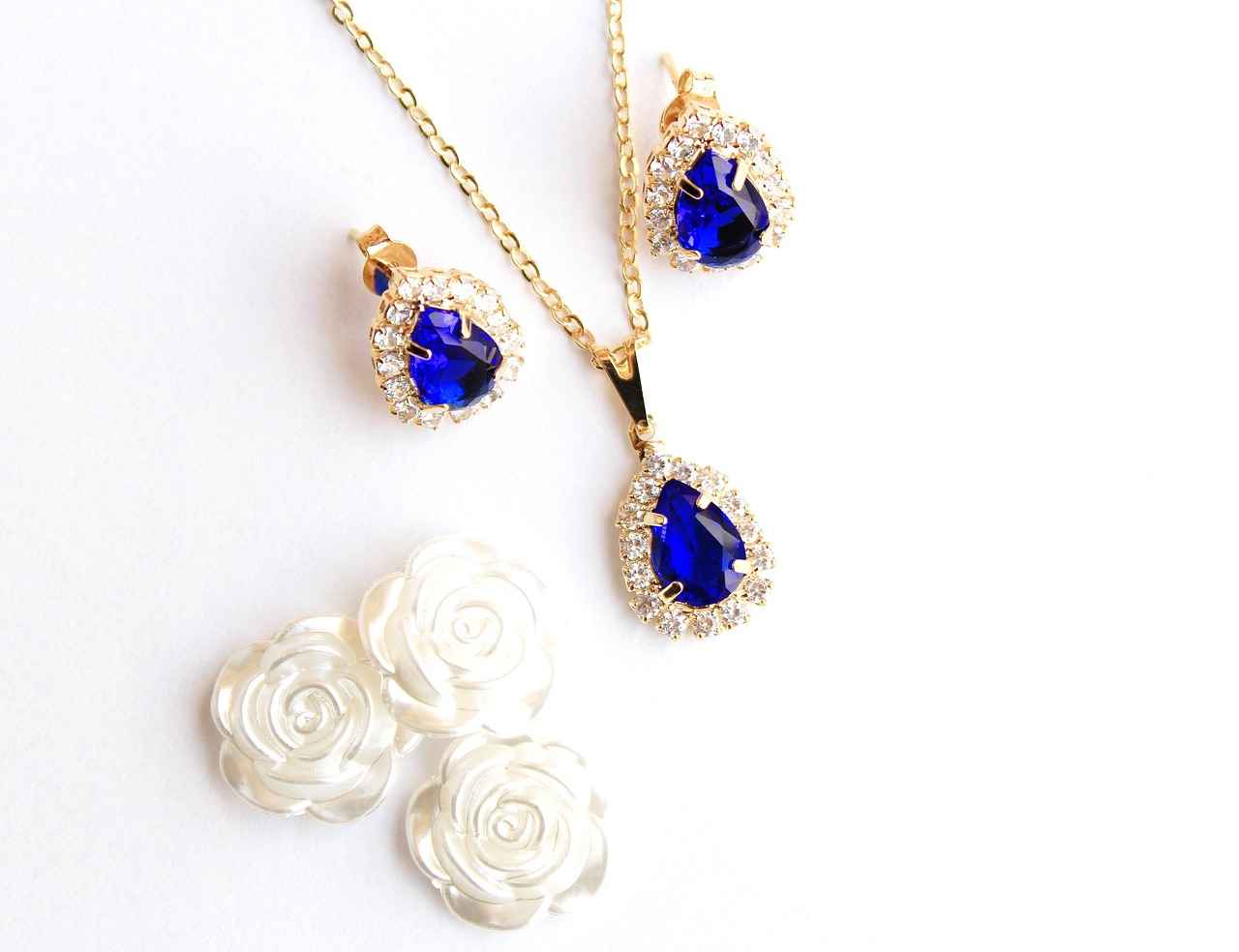
What Materials Are Best for Preventing Tangling?
When it comes to storing your necklaces, understanding the materials they are made from can significantly influence how easily they tangle. Different materials have unique properties that can either exacerbate or alleviate the problem of tangling. By educating yourself on these materials, you can make informed decisions about how to store your jewelry collection effectively.
Necklaces come in various materials, each with its own susceptibility to tangling. Here are some of the most common materials and how they can affect your necklace storage:
- Metal Chains: Metal chains, such as sterling silver or gold, are popular for their durability. However, they can easily tangle due to their flexible nature. Choosing thicker chains or those with a more rigid structure, like box chains, can help reduce tangling.
- Beaded Necklaces: Beaded necklaces are generally less prone to tangling, but the string or wire used can become knotted. Storing them flat in a compartmentalized box can help maintain their shape and prevent tangling.
- Satin or Silk Cords: These materials are often used for delicate necklaces. While they are soft and comfortable to wear, they can tangle easily. Using anti-tarnish pouches can help keep these necklaces separated, reducing the risk of tangling.
- Leather Strands: Leather is another popular choice, especially for bohemian-style necklaces. While they are less likely to tangle than metal chains, they can still knot. Consider using a jewelry tree to hang leather necklaces, allowing them to hang freely and avoid knots.
Understanding the different types of chains can also help you choose necklaces that are less likely to tangle:
- Snake Chains: These chains consist of tightly linked metal plates, making them less prone to tangling. Their smooth surface allows them to slide easily without catching on other necklaces.
- Box Chains: Similar to snake chains, box chains are made of square links that create a sturdy structure. This type of chain is also less likely to tangle, making it a great choice for everyday wear.
- Rope Chains: While visually appealing, rope chains can tangle more easily due to their twisted design. If you own rope chains, consider storing them separately from other necklaces.
One effective way to prevent tangling while also protecting your jewelry from tarnishing is to use anti-tarnish pouches. These pouches not only keep your necklaces organized but also help maintain their shine. Here’s how to effectively use them:
- Place each necklace in its own pouch to keep them separated.
- Store the pouches in a cool, dry place away from direct sunlight.
- Regularly check the pouches for any signs of wear or damage.
When selecting a storage method for your necklaces, consider the material:
- Metal Chains: Opt for hanging organizers or hooks to allow chains to hang freely.
- Beaded Necklaces: Use a jewelry box with compartments to keep them flat and organized.
- Satin or Silk Cords: Store them in soft pouches to avoid friction and tangling.
- Leather Strands: A jewelry tree can be an excellent option, keeping them visible and tangle-free.
By understanding the materials of your necklaces and how they interact with various storage methods, you can significantly reduce the risk of tangling. This will not only keep your jewelry looking beautiful but also prolong its lifespan.
Chain Types: Which Are Less Prone to Tangle?
When it comes to storing and organizing necklaces, understanding the different chain types is essential for preventing tangling. Certain chains, such as snake chains and box chains, are inherently designed to minimize the risk of tangling compared to other styles. This knowledge can significantly influence your choice of jewelry and storage solutions.
Snake chains are characterized by their smooth, flexible design. The individual segments of the chain are closely linked, creating a sleek appearance that reduces friction. This minimal friction means that snake chains are less likely to knot or tangle when stored. Their unique structure allows them to lay flat, making them an excellent choice for both wearing and storing without the worry of entanglement.
Box chains are another excellent choice for those looking to avoid tangling. These chains consist of square links that are tightly connected, providing a sturdy and stable form. The flat surfaces of the links prevent them from intertwining easily, allowing for a more organized storage experience. Box chains are particularly popular for pendants, as their strength supports heavier pieces without compromising the integrity of the chain.
- Rolo Chains: While not as prone to tangling as some other types, rolo chains can still intertwine due to their round links. Proper storage methods are essential to keep them untangled.
- Figaro Chains: These chains alternate between short and long links, which can lead to tangling if not stored correctly. Using hooks or dividers can help mitigate this issue.
- Ball Chains: While they are less likely to tangle than delicate chains, ball chains can still knot if not stored properly. Consider using a dedicated storage solution for these types.
When selecting a chain, consider factors such as durability, style, and functionality. If you frequently wear your necklaces and want to avoid tangles, opting for snake or box chains can be beneficial. Additionally, think about how you plan to store your jewelry. A well-organized storage system can enhance the longevity of your pieces and keep them looking their best.
To maximize the benefits of your chain type, consider the following storage solutions:
- Jewelry Boxes: Look for boxes with compartments that can accommodate different chain types, ensuring they remain separated.
- Hanging Organizers: These are perfect for snake and box chains, allowing them to hang freely and reducing the risk of tangling.
- Travel Cases: If you’re on the go, invest in a travel case designed to keep chains secure and untangled.
In conclusion, understanding the differences between various chain types can significantly improve your jewelry management. By selecting less prone-to-tangle options like snake and box chains, and utilizing effective storage methods, you can keep your necklaces organized, accessible, and in pristine condition.
Using Anti-Tarnish Pouches
When it comes to preserving the beauty of your jewelry, anti-tarnish pouches are a game changer. These specially designed pouches not only protect your precious pieces from tarnishing but also play a crucial role in preventing tangling. By keeping your jewelry separated and contained, they ensure that your necklaces remain in pristine condition, ready to be worn at a moment’s notice.
Anti-tarnish pouches are small bags made from materials that are treated to prevent the oxidation process that causes tarnishing. They are particularly beneficial for silver, gold, and other metals that are prone to tarnish. The pouches often contain a special lining that absorbs moisture and chemicals from the air, which are common culprits in tarnishing.
One of the primary benefits of using anti-tarnish pouches is their ability to keep necklaces organized. When necklaces are stored in a pouch, they are less likely to come into contact with one another, thus reducing the risk of tangling. This is especially important for delicate chains that can easily knot. By using these pouches, you can:
- Maintain organization: Each necklace can be stored in its own pouch, preventing them from intertwining.
- Protect from damage: The soft material of the pouches prevents scratches and other forms of damage.
- Enhance accessibility: Pouches make it easy to grab the necklace you want without having to untangle others.
When selecting anti-tarnish pouches, consider factors such as size, material, and effectiveness. Look for pouches that are specifically labeled as anti-tarnish and check for reviews or recommendations. Some pouches are designed with additional features, such as zippers or drawstrings, to further secure your jewelry.
To maximize the benefits of anti-tarnish pouches, follow these simple steps:
- Clean your jewelry: Before storing, ensure that your necklaces are clean and dry to prevent any residue from causing tarnish.
- Store separately: Place each necklace in its own pouch to keep them from tangling.
- Seal tightly: Make sure the pouches are securely closed to keep out moisture and air.
In addition to using anti-tarnish pouches, consider these tips for further enhancing the longevity of your necklaces:
- Store in a cool, dry place: Avoid humid areas like bathrooms, which can accelerate tarnishing.
- Use silica gel packets: Including silica gel packets in your storage area can help absorb excess moisture.
- Regularly check your jewelry: Periodic inspections can help you catch any potential issues before they become serious.
In summary, anti-tarnish pouches are an essential investment for anyone looking to protect their jewelry. By keeping necklaces separated and contained, these pouches not only prevent tarnishing but also significantly reduce the risk of tangling. Incorporating these pouches into your jewelry storage routine can help maintain the beauty and integrity of your collection for years to come.
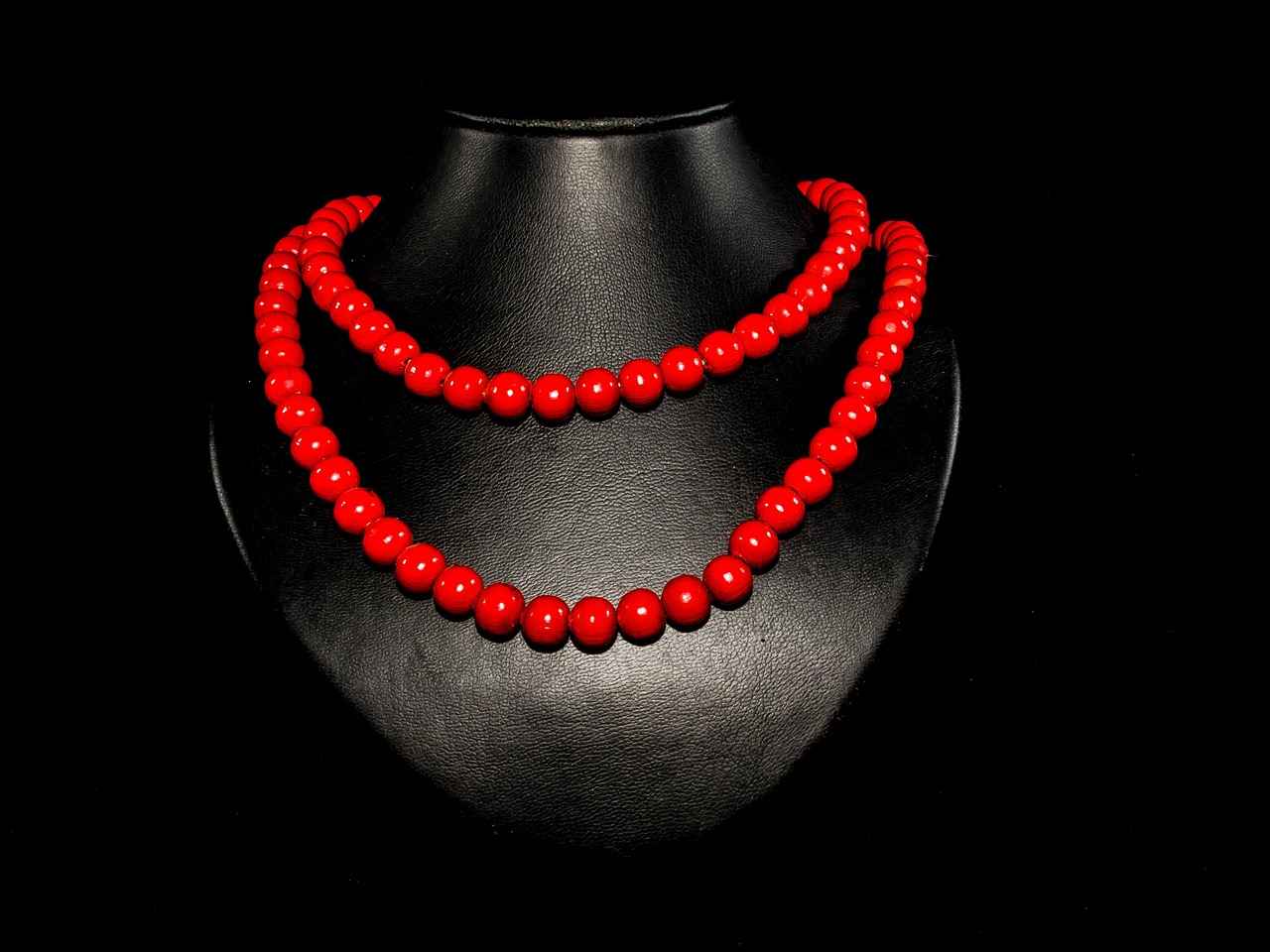
How to Organize Necklaces by Length or Style?
Organizing your necklaces is not just about aesthetics; it can significantly enhance your jewelry experience. By systematically arranging your necklaces by length or style, you can simplify access and reduce the chances of tangling. This approach not only makes your collection more manageable but also allows you to showcase your jewelry beautifully.
Grouping necklaces by length can be particularly beneficial for several reasons:
- Quick Access: When you need a necklace to match your outfit, finding the right length becomes effortless.
- Reduced Tangling: Longer necklaces can easily tangle with shorter ones. By separating them based on length, you minimize this risk.
- Visual Appeal: A well-organized display of necklaces can serve as an attractive decor element in your home.
To effectively organize your necklaces by length, consider the following steps:
- Measure Each Necklace: Use a measuring tape to determine the length of each piece.
- Sort into Categories: Create categories such as short (16-18 inches), medium (20-24 inches), and long (26 inches and above).
- Label Storage: Use tags or labels to clearly mark each category in your storage solution.
In addition to length, organizing by style can also enhance your jewelry management:
- Easy Outfit Coordination: When your necklaces are categorized by style, selecting a piece that complements your outfit becomes a breeze.
- Showcase Your Collection: Displaying necklaces by style allows you to highlight your personal taste and the variety in your collection.
- Streamlined Selection: If you have a diverse collection, being able to quickly locate a specific style can save time.
To organize your necklaces by style, follow these practical tips:
- Identify Styles: Categorize your necklaces into groups such as casual, formal, bohemian, or vintage.
- Use Clear Storage: Consider using clear bins or organizers that allow you to see each style at a glance.
- Regularly Update: As your collection grows, periodically reassess and adjust your organization to accommodate new styles.
For those with extensive collections, a combination of both length and style organization can be beneficial. Here’s how:
- Create Subcategories: Within each length category, further divide necklaces by style to enhance organization.
- Use Multi-Compartment Organizers: Consider jewelry boxes or hanging organizers with multiple sections to keep everything tidy.
- Visual Displays: If space allows, display necklaces on a jewelry tree or wall-mounted hooks, grouped by both length and style for easy access.
In conclusion, organizing necklaces by length or style is an effective strategy for maintaining a beautiful and functional jewelry collection. By implementing these methods, you can enjoy quick access to your favorite pieces while ensuring they remain tangle-free and well-preserved.
Length-Based Organization
When it comes to organizing your jewelry collection, particularly necklaces, can be a game-changer. This method not only enhances the accessibility of your pieces but also significantly reduces the risk of tangling. By categorizing necklaces according to their lengths, you can quickly locate the perfect piece for any occasion.
Organizing your necklaces by length has several benefits:
- Quick Access: Finding the right necklace becomes effortless when they are arranged by length. No more rummaging through a tangled mess!
- Reduced Tangling: Longer necklaces can entangle shorter ones if stored together. Grouping them by length minimizes this risk.
- Visual Appeal: A well-organized collection not only looks good but also makes it easier to plan outfits and accessorize.
To effectively implement length-based organization, follow these steps:
- Gather Your Necklaces: Start by collecting all your necklaces in one place. This will give you a clear view of your collection.
- Measure Each Necklace: Use a measuring tape to determine the length of each piece. This can be done easily at home.
- Create Length Categories: Divide your necklaces into categories such as short (up to 16 inches), medium (16-24 inches), and long (24 inches and above).
- Designate Storage Solutions: Depending on the length, choose appropriate storage solutions. For example, shorter necklaces can be stored in compartments, while longer ones might benefit from hanging organizers.
Here are some effective storage options tailored for length-based organization:
- Jewelry Boxes: Choose boxes with adjustable compartments to accommodate different lengths. This keeps necklaces separated and tangle-free.
- Hanging Organizers: Utilize wall-mounted or freestanding hanging organizers designed to hold necklaces without crowding.
- Drawer Inserts: Use drawer inserts that allow for vertical storage, keeping necklaces separated and easily accessible.
Once you have organized your necklaces by length, it’s essential to maintain this system:
- Regular Checks: Periodically inspect your necklaces to ensure they remain untangled and in good condition.
- Reorganize as Needed: As your collection grows, revisit your organization system to accommodate new pieces.
- Use Anti-Tarnish Solutions: Consider using anti-tarnish pouches or cloths to protect your necklaces while stored.
In conclusion, grouping your necklaces by length is a practical and efficient method to keep your jewelry organized. This approach not only enhances accessibility but also preserves the integrity of each piece, ensuring that your favorite necklaces are always ready to wear. By implementing these strategies, you can enjoy a beautiful and tangle-free jewelry collection.
Style-Based Organization
When it comes to organizing your necklace collection, is a method that can greatly enhance your jewelry experience. This approach allows you to categorize your necklaces based on their design and aesthetic, making it easier to select the perfect piece for any outfit. Whether you have a vast array of statement necklaces, delicate chains, or bohemian-inspired pieces, organizing by style can streamline your selection process.
One of the primary reasons for adopting a style-based organization system is the ease of selection. When your necklaces are grouped by style, you can quickly find the right accessory that complements your outfit. For instance, if you’re dressing for a formal event, having all your elegant pieces in one section allows for faster decision-making. This method is particularly beneficial for individuals with diverse jewelry collections, as it reduces the time spent searching for the right piece.
Implementing a style-based organization system can be simple and effective. Here are some steps to consider:
- Identify Your Styles: Begin by categorizing your necklaces into distinct styles. Common categories may include chic, bohemian, vintage, and minimalist.
- Create Dedicated Spaces: Use storage solutions such as jewelry boxes, hanging organizers, or even decorative bowls to create specific spaces for each style.
- Labeling: Consider labeling sections or containers to make it easier to locate your necklaces. This can be especially helpful if you have a large collection.
Organizing your necklaces by style not only enhances accessibility but also allows you to appreciate your collection more fully. Here are some additional benefits:
- Visual Appeal: A well-organized jewelry display can serve as a decorative element in your room, showcasing your personal style.
- Reduced Damage: By keeping necklaces separated by style, you can minimize the risk of tangling and damage, preserving their integrity over time.
- Inspiration for Outfits: When your jewelry is organized, you may find new ways to mix and match pieces, inspiring fresh outfit combinations.
Once you’ve established a style-based organization system, maintaining it is crucial. Here are some tips:
1. Regularly reassess your collection to remove pieces you no longer wear.2. Clean your necklaces periodically to keep them looking their best.3. Update your organization system as your style evolves.
In conclusion, organizing your necklaces by style is a practical and aesthetically pleasing solution for managing your jewelry collection. This method not only simplifies the selection process but also enhances your overall jewelry experience. By implementing a systematic approach, you can enjoy your collection while ensuring that each piece remains in excellent condition.

What Are Some Tips for Traveling with Necklaces?
Traveling with necklaces can be a delightful experience, allowing you to showcase your favorite pieces while exploring new destinations. However, it also presents unique challenges, especially the risk of tangling. To ensure your jewelry remains intact and organized during your travels, implementing specific strategies is essential. Here are some effective tips to help you travel with your necklaces without the hassle of tangling.
A dedicated travel jewelry case is a worthwhile investment. Look for one that features compartments and dividers specifically designed for necklaces. This will keep your jewelry organized and prevent it from moving around during transit. Ensure the case is compact enough to fit in your luggage while providing ample space for your collection.
One of the simplest yet most effective hacks for preventing tangling is to use straws. By threading your delicate chains through plastic or paper straws, you can keep them separated and safe from knots. This method is not only affordable but also incredibly easy to implement, making it a favorite among seasoned travelers.
Another practical tip is to wrap each necklace in a soft cloth or tissue paper. This will provide a protective layer, preventing scratches and tangling. You can also use small pouches or zip-lock bags to keep each piece contained and organized. This method works particularly well for longer necklaces that are prone to tangling.
When packing your necklaces, consider organizing them by length or style. This approach not only makes it easier to find the right piece when you need it, but it also minimizes the chances of tangling. For example, you can place shorter necklaces in one section and longer ones in another, keeping them separate and easy to access.
If you frequently travel with certain necklaces, consider replacing regular clasps with magnetic clasps. These clasps make it easier to put on and take off necklaces, and they can also help prevent tangling during travel. The ease of use combined with their secure hold makes them a practical choice for travelers.
If you still have the original boxes from your jewelry purchases, they can serve as excellent travel storage. These boxes are often designed to protect the jewelry and can be easily packed. Just ensure that they are securely closed to prevent any damage during transit.
A pill organizer can be a clever way to store small necklaces or earrings. Each compartment can hold a different piece, keeping them separated and organized. This method is particularly useful for travelers who have a variety of smaller jewelry items that can easily get lost or tangled.
Before and after your travels, take the time to inspect your necklaces for any signs of wear or potential tangling. Regular maintenance, such as cleaning and checking clasps, can help prevent damage and tangling in the future. Keeping your jewelry in good condition will make your travels more enjoyable.
By following these tips, you can ensure that your necklaces remain safe and untangled while traveling. With a little preparation and organization, you can enjoy your jewelry collection without the stress of dealing with knots and tangles.
Travel Jewelry Cases
When it comes to traveling, ensuring that your jewelry remains safe and organized is essential. One of the best investments you can make for your jewelry collection is a travel jewelry case. These specially designed cases provide a multitude of benefits, particularly for necklaces, which are notorious for tangling during transit.
Travel jewelry cases are specifically crafted to address the common issues faced by jewelry enthusiasts on the go. They often feature dedicated compartments for necklaces, allowing you to store each piece separately. This design is crucial as it prevents necklaces from intertwining, which can lead to frustrating tangles and potential damage.
- Multiple Compartments: Look for cases that offer various compartments to accommodate different necklace lengths and styles.
- Soft Linings: A soft, padded interior helps protect delicate chains from scratches and other damage.
- Secure Closures: Ensure the case has reliable zippers or clasps to keep your jewelry secure during travel.
- Compact Design: A lightweight and compact case is essential for easy packing without taking up too much luggage space.
To maximize the effectiveness of your travel jewelry case, consider the following tips:
1. Separate by Length: Place longer necklaces in larger compartments to avoid tangling with shorter pieces.2. Use Anti-Tarnish Pouches: Store necklaces in anti-tarnish pouches within the case to prevent tarnishing and tangling.3. Keep Similar Styles Together: Grouping similar styles can make it easier to find the perfect piece for your outfit without disturbing other necklaces.
If a travel jewelry case isn’t available, there are other creative solutions to keep your necklaces organized:
- Utilizing Straws: A popular hack involves threading the chain of your necklace through a straw. This simple method prevents tangling and is easy to implement.
- Wrap in Soft Cloth: Wrapping necklaces in a soft cloth or a small pouch can also help keep them untangled while adding a layer of protection.
In addition to using a travel jewelry case, it’s important to regularly check your necklaces for any signs of wear or damage. Before packing, give each piece a quick inspection to ensure they are in good condition. This proactive approach can save you from potential tangling issues and damage while on the road.
Investing in a travel jewelry case is a wise decision for anyone who loves to travel with their jewelry. With the right case, you can keep your necklaces organized, untangled, and secure, allowing you to enjoy your travels without worrying about your precious accessories. Whether you’re heading out for a weekend getaway or an extended trip, having a reliable travel jewelry case can make all the difference in maintaining the beauty and integrity of your jewelry collection.
Using Straws for Chains
Traveling with jewelry can be a delightful experience, but it often comes with the challenge of keeping necklaces from tangling. One innovative and practical solution is utilizing straws to protect your delicate chains. This method is not only effective but also incredibly simple to implement, making it a favorite among travelers.
The straw method involves threading your necklace chains through a straw before placing them in your travel case. This technique prevents the chains from intertwining, which is a common issue when jewelry is stored together. The straw acts as a protective barrier, allowing the chain to hang freely without the risk of knots forming.
- Prevents Tangles: By providing a separate channel for each chain, straws significantly reduce the chance of tangling.
- Easy to Implement: This method requires minimal preparation—just cut the straws to a suitable length and you’re ready to go.
- Lightweight and Portable: Straws are lightweight, making them an ideal travel companion without adding extra bulk to your luggage.
When selecting straws for this purpose, consider the following:
- Material: Both plastic and paper straws work well. However, silicone straws are a more durable option that can be reused.
- Diameter: Choose straws that are wide enough to accommodate your necklace chains without causing any bending or damage.
- Length: Cut the straws to a length that is appropriate for the size of your necklaces, ensuring they are not too short or too long.
1. Gather your necklaces and straws.2. Cut the straws to the desired length.3. Carefully thread each necklace through a straw.4. Secure the ends of the straw if necessary to keep the necklace in place.5. Place the straws in your travel jewelry case or pouch.
While the straw method is highly effective, consider these additional tips to ensure your necklaces remain tangle-free:
- Use Individual Pouches: Store each necklace in its own pouch for added protection.
- Avoid Overpacking: Ensure your jewelry case is not overstuffed, as this can lead to tangling despite precautions.
- Inspect Before Packing: Check each necklace for knots or tangles before packing to address any issues early.
In addition to the straw method, consider other storage solutions for your necklaces:
- Travel Jewelry Cases: Invest in a dedicated travel case with compartments designed for necklaces.
- Hanging Organizers: Use hanging organizers that allow necklaces to dangle freely, reducing the risk of tangling.
By implementing the straw method and combining it with other effective storage solutions, you can travel with your necklaces confidently, knowing they will remain untangled and ready to wear upon arrival. This simple yet ingenious hack is a must-try for any jewelry lover on the go!
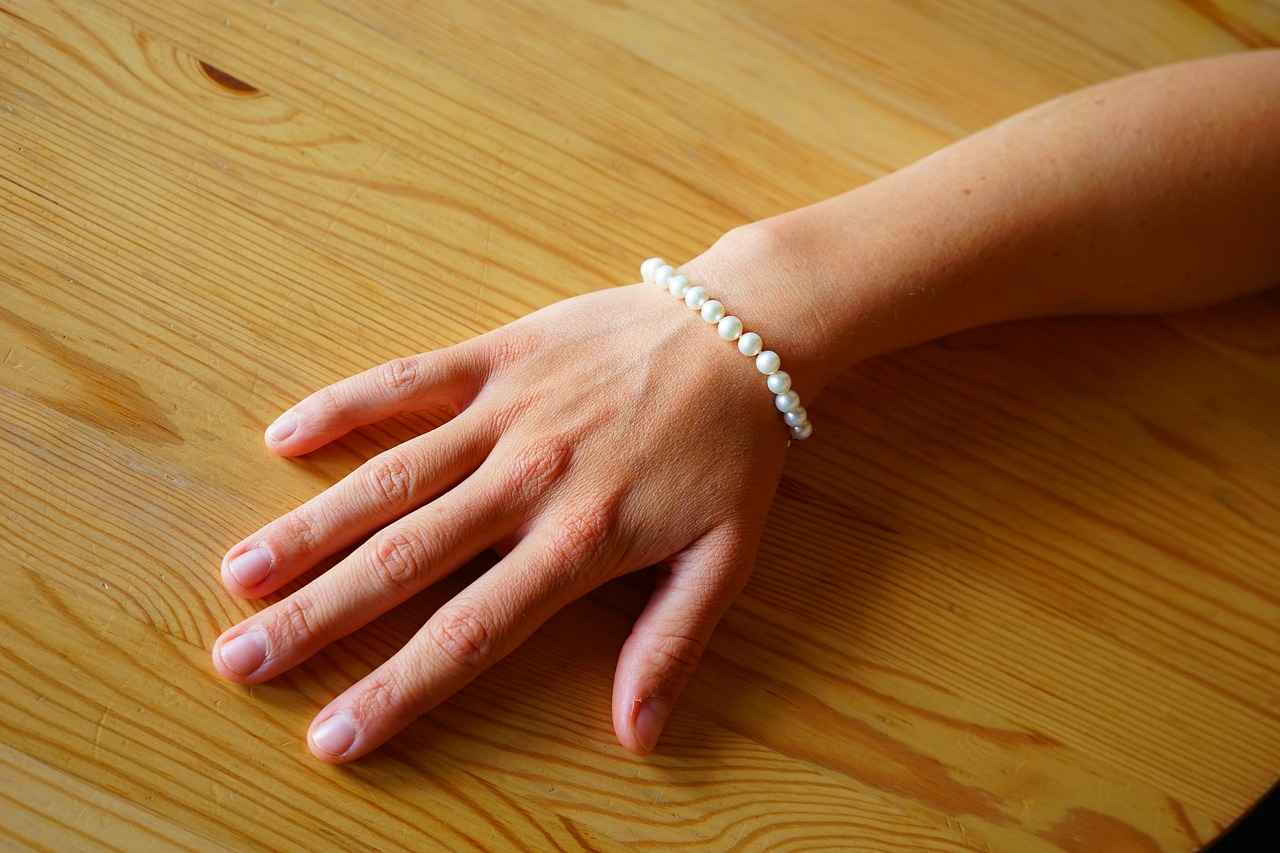
How to Maintain Your Necklace Collection?
Maintaining your necklace collection is crucial for ensuring that each piece retains its beauty and functionality over time. Regular maintenance not only enhances the aesthetic appeal of your jewelry but also significantly extends its lifespan. In this section, we will explore essential cleaning techniques, proper storage methods, and inspection routines that can help you keep your necklaces in pristine condition.
Regular maintenance is essential for preserving the quality of your necklaces. Over time, dirt, oils, and environmental factors can accumulate on the surface, leading to tarnishing and dullness. By implementing a routine maintenance schedule, you can ensure that your jewelry remains as stunning as the day you bought it.
Different materials require specific cleaning methods to avoid damage. Here are some effective cleaning techniques:
- Gold and Silver Necklaces: Use a gentle jewelry cleaner or a mixture of warm water and mild soap. Soak for a few minutes, then gently scrub with a soft cloth to restore shine.
- Pearls: Wipe pearls with a soft, damp cloth after each wear to remove oils and dirt. Avoid submerging them in water, as it can weaken the string.
- Costume Jewelry: Clean with a dry cloth to avoid water damage. For stubborn dirt, use a cotton swab dipped in rubbing alcohol.
Proper storage is vital to prevent tangling and damage. Here are some effective storage methods:
- Individual Pouches: Store each necklace in a separate anti-tarnish pouch to keep them safe from scratches and tangling.
- Jewelry Organizer: Use a jewelry box with compartments or a hanging organizer to keep your necklaces separated and easily accessible.
- Wall-Mounted Displays: Consider using wall-mounted hooks or a jewelry tree to keep necklaces visible and tangle-free.
Regular inspections are crucial for identifying potential issues before they become serious problems. Aim to inspect your necklaces at least once every few months. Look for:
- Loose Clasps: Ensure that clasps are secure and functioning properly to prevent loss.
- Worn Chains: Check for any signs of wear or fraying, particularly in delicate chains.
- Tarnishing: Look for discoloration, especially in silver and gold pieces, and clean them promptly.
In addition to cleaning and storage, consider these tips:
- Avoid Wearing Necklaces While Swimming or Exercising: This can prevent exposure to chlorine, sweat, and other damaging elements.
- Keep Necklaces Away from Harsh Chemicals: Household cleaners and perfumes can tarnish and damage jewelry.
- Regularly Rotate Your Collection: Wearing different pieces helps prevent prolonged stress on any single necklace, reducing wear and tear.
By following these maintenance tips, you can enjoy your necklace collection for years to come, ensuring each piece remains a cherished part of your jewelry box.
Cleaning Techniques for Different Materials
When it comes to maintaining your jewelry, understanding the specific cleaning techniques for different materials is crucial. Each type of necklace, whether it is made of gold, silver, or fashion jewelry, requires unique care to preserve its beauty and prevent damage. This article delves into effective cleaning methods tailored to various materials, ensuring your necklaces remain stunning and tangle-free.
Regular cleaning of necklaces not only enhances their appearance but also extends their lifespan. Dirt, oils, and environmental factors can accumulate over time, leading to tarnishing and dullness. By implementing appropriate cleaning techniques, you can maintain the luster and integrity of your jewelry.
Gold necklaces are relatively easy to clean. To maintain their shine, use a soft cloth to wipe them down after wearing. For deeper cleaning, mix a few drops of mild dish soap in warm water and gently scrub with a soft brush. Rinse thoroughly and dry with a microfiber cloth to avoid scratches.
Silver is prone to tarnishing, so it requires more frequent cleaning. Use a silver polishing cloth to remove tarnish and restore shine. For heavier tarnish, create a paste of baking soda and water, apply it gently, and rinse thoroughly. Always dry completely to prevent future tarnishing.
Fashion jewelry, often made from less durable materials, requires a delicate approach. Avoid submerging these pieces in water. Instead, use a damp cloth with a small amount of mild soap to wipe them clean. After cleaning, dry them immediately to prevent any moisture damage.
Beaded necklaces can be tricky due to their intricate designs. To clean them, use a soft, damp cloth to wipe the beads gently. Avoid soaking them in water, as this can loosen the string. If necessary, use a gentle soap solution, but ensure they are dried thoroughly afterward.
After cleaning, proper storage is essential to maintain the cleanliness and prevent tangling. Consider using:
- Individual Pouches: Store each necklace in its own pouch to avoid friction and tangling.
- Jewelry Boxes: Utilize compartments in jewelry boxes to keep necklaces separated.
- Hanging Organizers: Hang necklaces on hooks or a jewelry tree to ensure they remain untangled and visible.
In addition to cleaning, regular inspections are vital. Check for signs of wear, such as frayed chains or loose clasps. Early detection allows for timely repairs, preventing further damage and tangling.
Understanding the specific cleaning techniques for different materials is key to maintaining the beauty and longevity of your necklaces. By incorporating these practices into your jewelry care routine, you can ensure that your collection remains stunning and tangle-free for years to come.
Regular Inspections for Damage
Maintaining the beauty and integrity of your jewelry collection, particularly necklaces, requires more than just proper storage. One of the most crucial yet often overlooked aspects is the regular inspection of your necklaces for signs of wear. This proactive approach can significantly reduce the risk of tangling and damage, ensuring that each piece remains in excellent condition for years to come.
Just like any other valuable item, necklaces can suffer from wear and tear over time. Factors such as daily use, exposure to harsh environments, and even the materials used in their construction can lead to subtle forms of damage. Regular inspections allow you to:
- Identify Weak Points: Look for areas where the chain may be thinning or where clasps are beginning to wear out.
- Spot Tangling Issues Early: If you notice a necklace starting to tangle frequently, it may indicate a problem with the chain or clasp that needs addressing.
- Prevent Further Damage: Early detection of wear can prevent small issues from becoming major repairs, saving you both time and money.
Inspecting your necklaces doesn’t have to be a daunting task. Here are some steps to follow:
- Visual Examination: Start by examining the necklace closely. Look for any visible signs of damage such as kinks, broken links, or tarnishing.
- Check the Clasp: Ensure that the clasp is functioning properly. A faulty clasp can lead to loss or damage.
- Feel for Weakness: Gently tug on the chain to feel for any weak spots. If it feels loose or fragile, it may need repair.
- Clean Your Necklaces: Use a soft cloth to wipe down your necklaces. This not only keeps them looking shiny but also allows you to spot any issues more easily.
If your inspection reveals significant damage, it may be time to consult a professional jeweler. They can provide expert repairs that ensure your necklaces are restored to their original condition. Regularly scheduled maintenance checks, perhaps every six months, can help catch issues before they escalate.
In addition to regular inspections, consider these maintenance tips to prolong the life of your necklaces:
- Store Properly: Use designated jewelry organizers or pouches to prevent tangling while not in use.
- Avoid Harsh Chemicals: Keep necklaces away from perfumes, lotions, and cleaning products that can cause damage.
- Rotate Your Jewelry: Wearing different pieces regularly can help reduce wear on any single necklace.
By incorporating these practices into your jewelry care routine, you can ensure that your necklaces remain as stunning as the day you bought them. Regular inspections for damage not only enhance the longevity of your jewelry but also contribute to your overall enjoyment of wearing these beautiful pieces.
Frequently Asked Questions
- How can I prevent my necklaces from tangling?
To keep your necklaces tangle-free, consider using hooks or hanging organizers. These methods allow your necklaces to hang freely, reducing the chances of them getting intertwined.
- What is the best way to store necklaces at home?
The best storage option varies based on your collection size. Jewelry boxes with compartments or wall-mounted hooks are great choices to keep your necklaces organized and accessible.
- Are there specific materials that help prevent tangling?
Yes! Chains like snake or box chains are less prone to tangling. Additionally, using anti-tarnish pouches can keep your jewelry separated and protected.
- How should I organize my necklaces?
Organizing by length or style can make it easier to find the perfect piece. Grouping them in this way helps minimize tangling and simplifies your selection process.
- What tips do you have for traveling with necklaces?
Invest in a travel jewelry case with compartments to keep your necklaces organized. Alternatively, you can use straws to thread chains through, preventing them from tangling.
- How often should I clean my necklaces?
Regular cleaning is essential, but the frequency depends on usage. Inspect your necklaces for signs of wear and clean them according to their specific materials to maintain their beauty.
